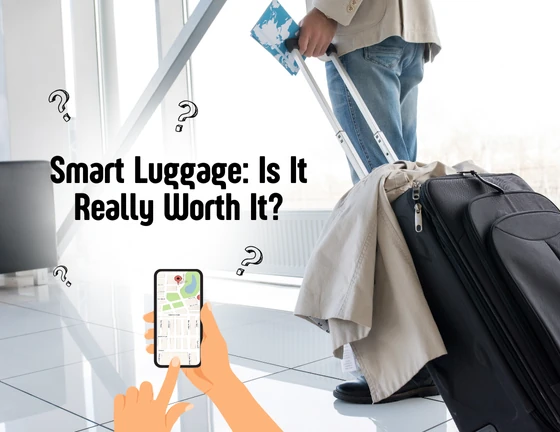Prohibited Items at Airports: What You Can’t Bring in Your Luggage
When traveling by plane, avoiding issues at security checkpoints is key to a stress-free trip. Have you ever arrived at the airport only to find out that something in your bag isn’t allowed? It happened to me once in Miami, and trust me—it’s not a pleasant experience. To make sure it doesn’t happen to you, here’s a complete guide to prohibited items at airports and how to avoid setbacks before boarding your flight.
What Can’t You Bring Through an Airport?

Regulations vary depending on the airline and country, but in general, these are the items you cannot bring in your carry-on or checked luggage:
- Large Quantities of Liquids
TSA (Transportation Security Administration) regulations state that you can only carry liquids in containers of 100 ml (3.4 oz) or less, stored in a clear plastic bag with a maximum capacity of 1 liter. This includes:
- Perfumes and lotions
- Gels and creams
- Large tubes of toothpaste
I once tried to carry a large bottle of lotion in my carry-on without knowing it was prohibited. At security, they made me throw it away with no option to recover it. Since then, I always double-check the size of my liquids before flying.
- Improperly Packed Lithium Batteries
External batteries and spares for laptops and cameras must go in your carry-on, but if they exceed 100 Wh, you may face issues.
👉 Pro Tip: If you need to bring a large battery, check your airline’s policy before flying. Some allow up to 160 Wh with prior approval.
- Sharp and Cutting Objects
- Pocket knives and scissors with blades over 6 cm (2.4 in)
- Any type of knife
- Screwdrivers and sharp tools
If you need to bring these items, make sure to pack them in your checked luggage.
- Aerosols and Flammable Substances
- Large aerosol deodorants
- Lighters and matches
- Pepper spray or personal defense sprays
On my first trip to Cuba, I had a small aerosol I didn’t even remember packing. Security confiscated it—and I learned my lesson.
- Explosives and Hazardous Materials
It may seem obvious, but you can’t bring any type of gunpowder, fireworks, or flammable chemicals.
- Restricted Food and Products
- Some fruits and meats are prohibited on international flights due to health regulations.
- In the U.S., fresh cheeses and cold cuts may be confiscated by customs.
👉 Tip: If you’re traveling with food, check the destination country’s restrictions to avoid having it taken away.
What Is Prohibited in Carry-On Luggage?

In addition to the items mentioned earlier, here’s a quick list of things you CANNOT bring in your carry-on luggage:
✅ Liquids in containers over 100 ml
✅ Improperly protected lithium batteries
✅ Large scissors or knives
✅ Flammable aerosols
✅ Sharp tools
✅ Lighters and matches in large quantities
If you’re unsure, pack these items in your checked luggage or check with the airline before you travel.
Frequently Asked Questions About Prohibited Items at Airports

- What items are not allowed at the airport?
You cannot bring large liquids, weapons, sharp objects, explosives, flammable substances, or items restricted for health reasons (such as certain foods). - Can I bring a power bank on the plane?
Yes, but only in your carry-on luggage and depending on its capacity in Wh. Some airlines allow up to 160 Wh with prior approval. - What items are not allowed in checked luggage?
Explosives, hazardous chemicals, and large lithium batteries are not allowed in checked baggage. - Are lighters allowed on a plane?
You can bring one lighter in your carry-on, but not in checked luggage. - What happens if I bring a prohibited item in my luggage?
It depends on the airport and the country. In the best-case scenario, they’ll make you throw it away. In the worst case, you could be fined or denied boarding.
Final Tip: Check Your Luggage Before You Travel
If you want to avoid the frustration of having to throw things away at the airport, review the restrictions before your trip. Using a good suitcase or travel bag with organized compartments also helps.
💼 Recommendation: To travel hassle-free and with enough space, I recommend the WrapUp Duffle Bag Poly 25-50 LBS Quadrate. Its design makes security checks easier and helps you avoid complications. You can check it out here:
Stress-free travel starts with well-prepared luggage. Avoid surprises and enjoy your flight.✈️
You may be interested in: Havana Air Allowed Luggage: Everything You Need to Know

Hi, I’m Emerson Luzardo, founder of Luzarcan Group Inc., the parent company of WrapToGo and WrapUpShop. I’m a coach, speaker, and facilitator in Neuro-Linguistic Programming (NLP), with a focus on neuroscience and human behavior. Through my projects, I aim to transform the way individuals and businesses connect with their goals, their brand, and their environment.
Based in Miami, I combine my business experience with applied neuroscience knowledge, helping others enhance their skills, overcome obstacles, and achieve extraordinary results. I also share insights, lessons, and strategies on my social media platforms.
Thank you for reading and joining me on this journey of growth and transformation.


























Recent Comments